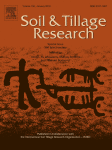Ver ítem
- xmlui.general.dspace_homeCentros Regionales y EEAsCentro Regional Chaco - FormosaEEA Sáenz PeñaArtículos científicosxmlui.ArtifactBrowser.ItemViewer.trail
- Inicio
- Centros Regionales y EEAs
- Centro Regional Chaco - Formosa
- EEA Sáenz Peña
- Artículos científicos
- Ver ítem
Soil quality indicators selection by mixed models and multivariate techniques in deforested areas for agricultural use in NW of Chaco, Argentina
Resumen
Soil quality (SQ) is a multidimensional concept based on the use of indicators. Indicators integrated assessment gives much more information than individual data and a select set of parameters; solve operational and economic aspects of measurement and monitoring. One of the most important effects of Land Use Change (LUC) is the alteration of original properties of native forest soil. Chaco province has no previous published studies on soil quality (SQ)
[ver mas...]
Soil quality (SQ) is a multidimensional concept based on the use of indicators. Indicators integrated assessment gives much more information than individual data and a select set of parameters; solve operational and economic aspects of measurement and monitoring. One of the most important effects of Land Use Change (LUC) is the alteration of original properties of native forest soil. Chaco province has no previous published studies on soil quality (SQ) for cleared lands. In Argentina between 1956 and 2000s the most significant changes occurred in West Subhumid Chaco, where crops expansion and deforestation were the highest of the country. The objectives of this study were: (1) to select SQI in native forest soils cleared for agricultural use in an area of Chaco province under LUC without available information; (2) to obtain values from these indicators for this environment, in order to increase current knowledge about LUC effects. Results show that LUC caused a significant degradation in these parameters compared with soil of pristine condition, affecting physical and chemical quality in a relatively short time. TOC was the most sensitive indicator and decreased between 40 and 11% in cleared sites at surface. The selection by mixed models in a first step and then by multivariate techniques was effective because some variables were more consistent to discriminate in the complete dataset the unaltered condition (NF) of the disturbed (CL), taking into account the inherent variability of sampling sites and depths. Selected indicators were: total organic carbon (TOC), particulate organic carbon (POC), total nitrogen (N), bulk density (Bd), and EF (erodible fraction); high correlation between some of them would allow performing an even tight selection. These indicators varied in performance between studied depths. This SQI set is feasible to recommend as a tool for soil health diagnostic and monitoring, prior to granting management plans currently submitted within the legal framework of native forests.
[Cerrar]

Autor
Rojas, Julieta Mariana;
Prause, Juan;
Sanzano, Gerardo Agustín;
Arce, Osvaldo Ernesto Antonio;
Sanchez, Maria Cristina;
Fuente
Soil and Tillage Research 155 : 250-262 (January 2016)
Fecha
2016-01
ISSN
0167-1987
1879-3444
1879-3444
Formato
pdf
Tipo de documento
artículo
Palabras Claves
Derechos de acceso
Restringido
 Excepto donde se diga explicitamente, este item se publica bajo la siguiente descripción: Creative Commons Attribution-NonCommercial-ShareAlike 2.5 Unported (CC BY-NC-SA 2.5)
Excepto donde se diga explicitamente, este item se publica bajo la siguiente descripción: Creative Commons Attribution-NonCommercial-ShareAlike 2.5 Unported (CC BY-NC-SA 2.5)

